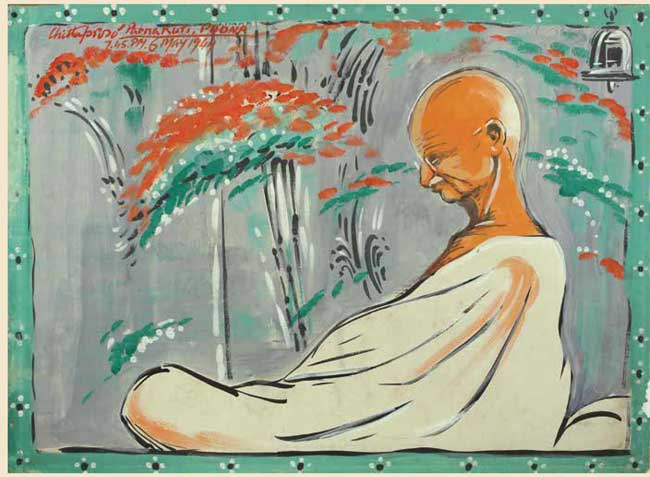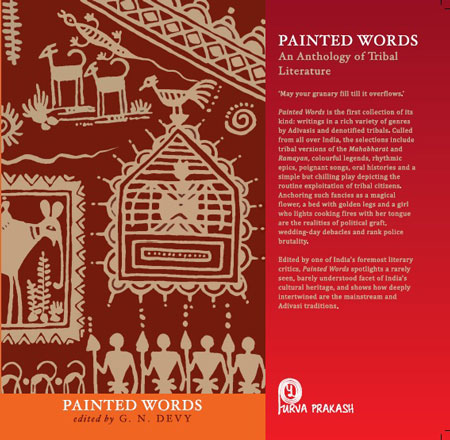“We are so much more than that. We follow a tradition rich in music, dance and love.” – Author Swarnalatha who runs an NGO that works for the upliftment for people of her Irula community >>
This website is being maintained with the motto “Showcasing new initiatives in education“. To catch up with “what’s going on in today’s India”, suffice a few pointers to discussions in today’s India.
Appreciating “tribal” or “Adivasi” traditions will shed new light on India’s cultural heritage in general. The challenge here is the fact that each tradition deserves to be studied in its own right.
In order to succeed, we need to look into current issues or “modernity” as well. The reward is a better understanding of India, a country that prides itself as being the “worlds largest democracy” even as the checks and balances envisaged by the constitution cannot be taken for granted any longer.
India is experiencing what is known as ‘competitive authoritarianism‘ or ‘electoral authoritarianism’ today [as] we need to look at what is politics in India between elections. Because democracy is under attack for more serious reasons when you look at the way checks and balances are not working anymore. Most of the institutions have become instruments of the executive. Many developments in present-day India – critics and dissenters being silenced, independent institutions being compromised and a pliable media – last occurred during the Emergency imposed by Indira Gandhi in 1975.
Source: “Indian Judiciary Has Become an Instrument of the Executive”, interview by Sidharth Bhatia, The Wire, 7 July 2022
URL: https://thewire.in/rights/full-text-christophe-jaffrelot-sidharth-bhatia-india-hindutva
Date Visited: 11 July 2022
“We shall first have to give up this hubris of considering tribes backward. Every tribe has a rich and living cultural tradition and we must respect them.” – Vice President M. Venkaiah Naidu on the constitutional obligation to respect the cultural traditions of India’s tribal communities

Gandhian social movement | Constitution | Adverse inclusion >>
“Air is free to all but if it is polluted it harms our health… Next comes water… From now on we must take up the effort to secure water. Councillors are servants of the people and we have a right to question them.” – Mohandas K. Gandhi, Ahmedabad address on 1 January 1918; quoted by his grandson, Gopalkrishna Gandhi, in “On another New Year’s Day: Mahatma Gandhi’s ‘khorak’ a 100 years ago” (The Hindu, 1 January 2018)
“The world has enough for everyone’s need but not for anyone’s greed.” – Mahatma Gandhi quoted by Medha Patkar and Baba Amte (Narmada Bachao Andolan)
“We part with the fond hope that the closing years of the twentieth century would see us keeping the promise made to our children by our Constitution about a half century ago. Let the child of the twenty-first century find himself into that ‘heaven of freedom’ of which our poet laureate Rabindranath Tagore has spoken in Gitanjali.” – Supreme Court of India quoted by the National Commission for Protection of the Child Rights (1996)
“I think a creative writer should have a social conscience. I have a duty towards society” – Award-winning writer Mahasweta Devi in Postcolonial Studies (2012)
“India needs a vision for itself that is morally defensible” – Harish Khare (The Hindu Opinion, 6 June 2013)
“I would like to direct attention to the general approach when we encounter the ‘other’ – the question of our protocol, etiquette and attitude. In our eagerness to know we probably show a disregard to these civilities. We try to buy friendship for building up rapport; we try to intrude into others’ territory without being invited and carry presents that we perceive would be appreciated to assert our friendliness.” – Anthropologist R.K. Bhattacharya in “The Holistic Approach to Anthropology” >>

“We have to write our own stories, about our issues, from our own perspectives.” – Abhay Xaxa, a “Fiercely Unapologetic Adivasi Scholar-Activist” | Read more >>
“Adivasis in the hills and the forests have lost their land and health and have been displaced by development projects” – Ramachandra Guha in “What’s holding India back?” (Deccan Herald, 13 November 2012)
“India is blessed with unique and an enormous amount of biodiversity that sustains many of our economic endeavours, and provides aesthetic, cultural and spiritual values. This biodiversity is declining, and this decline is threatening our survival.” – Kamaljit S. Bawa on the need of partnerships for sustaining life in “Our biodiversity, our life, our future” (The Hindu, Sci-Tech / Energy & Environment, 2 August 2010)
“The tribal culture at its best provides a living example of the Gandhian concept of trusteeship […] In cross-cultural settings, individual and group relations among tribals are valued on trust rather than on dominance.” – Lachman Khubchandani in Indigenous Peoples: Responding to Human Ecology
“There are grim realities of existence as tribals in this country, and the unfortunate aspect is that their unheard voices fail to make a din in the power corridors […] we must devise innovative systems of engagement, based not on power or hierarchical administration but equality.” – Gopal Subramanium, a senior advocate, a former Solicitor General of India, and a former Chairman, Bar Council of India favouring a “more inclusive approach that respects human rights” in response to extremism (The Hindu, Opinion, 8 June 2013)
“The defining characteristics of these forested and hilly terrains [in a clearly demarcated known as ‘Red Corridor’ within the ‘Ramayana Corridor’] are a high proportion of vanvasis [forest dwellers] and backwardness. A section of intelligentsia trained in typical colonial mould takes ‘ethnicity’ and isolation of vanvasis to paint a negative picture about the Indian State and mainstream society.” – Indian Police Service (IPS) officer M Nageswara Rao in “Scheduled Tribes: Who are they? How to mainstream them?” (Times of India, Opinion, 16 May 2020)
“Scheduling was the act of committing certain areas to a written list or inventory of ‘special administrative regimes’; here, normal laws and regulations prevalent in the rest of British India would not be applicable. […] The underlying belief behind this categorization was that modern representative democracy with electoral politics and law courts was highly unsuited to tribal communities.” – Saagar Tewari, quoted by Richard Kamei (doctoral candidate at the Tata Institute of Social Sciences in Mumbai) in “Uncivilising the Mind: How anthropology shaped the discourse on tribes in India” (Caravan Magazine, 1 March 2020)
Up-to-date reports by Indian journalists and commentators
To search Indian periodicals, magazines, web portals and other sources safely, click here. To find an Indian PhD thesis on a particular tribal community, region and related issues, click here >>
Search tips
Combine the name of any particular state, language or region with that of any tribal (Adivasi) community.
Add keywords of special interest (music, poetry, dance just as health, sacred grove and biodiversity); learn about the rights of Scheduled Tribes such as the “Forest Rights Act” (FRA); and the United Nations “Declaration on the Rights of Indigenous Peoples”, “Universal Declaration of Human Rights”, “women’s rights”, or “children’s right to education”.
Specify any other issue or news item you want to learn more about (biodiversity, bonded labour and human trafficking, climate change, ecology, economic development, ethnobotany, ethnomedicine, global warming, hunter-gatherers in a particular region or state, prevention of rural poverty, water access).
For official figures include “scheduled tribe ST” along with a union state or region: e.g. “Chhattisgarh ST community”, “Himalayan tribe”, “Scheduled tribe Tamil Nadu census”, “ST Kerala census”, “Particularly Vulnerable Tribal Group Jharkhand”, “PVTG Rajasthan”, “Adivasi ST Kerala”, “Adibasi ST West Bengal” etc.
In case the Google Custom Search window is not displayed here try the following: (1) toggle between “Reader” and regular viewing; (2) in your browser’s Security settings select “Enable JavaScript” | More tips >>
Note: hyperlinks and quotes are meant for fact-checking and information purposes only | Disclaimer >>
Find publications by reputed authors (add “open access” for freely downloadable content)
PDF-repository: texts quoted & further reference (Google Drive) >>
Adivasis and non-Adivasis have long worked together with shared values while addressing misconceptions and discrimination. To familiarize yourself with their joint efforts, follow a brief Guided Tour of this website >>
Tips for using interactive maps
Toggle to normal view (from reader view) should the interactive map not be displayed by your tablet, smartphone or pc browser
For details and hyperlinks click on the rectangular button (left on the map’s header)
Scroll and click on one of the markers for information of special interest
Explore India’s tribal cultural heritage with the help of another interactive map >>
See also
Adverse inclusion | Casteism | Rural poverty
Demographic Status of Scheduled Tribe Population of India (Census figures 2011)
Fact checking | Figures, census and other statistics
Human Rights Commission (posts) | www.nhrc.nic.in (Government of India)
Search tips | Names of tribal communities, regions and states of India
“What is the Forest Rights Act about?” – Campaign for Survival and Dignity
“Who are Scheduled Tribes?” – Government of India (National Commission for Scheduled Tribes, NCST)

Tribal Literature by G.N. Devy >>
Free eBooks & Magazine: Adivasi literature and languages >>
“India, a union of states, is a Sovereign, Secular, Democratic Republic with a Parliamentary system of Government. The President is the constitutional head of Executive of the Union. In the states, the Governor, as the representative of the President, is the head of Executive. The system of government in states closely resembles that of the Union. There are 28 states and 8 Union territories in the country. Union Territories are administered by the President through an Administrator appointed by him/her. From the largest to the smallest, each State/UT of India has a unique demography, history and culture, dress, festivals, language etc. This section introduces you to the various States/UTs in the Country and urges you to explore their magnificent uniqueness…” – KnowIndia (Government), States and Union Territories (Visited: 2 September 2023)
Learn more about India’s 28 States and 8 Union Territories – From Andhra Pradesh to West Bengal | Nutrition >>